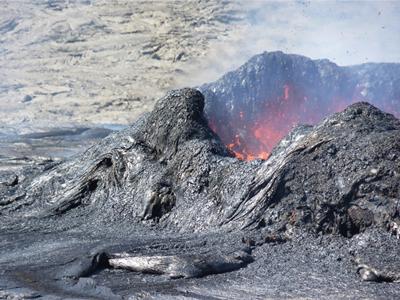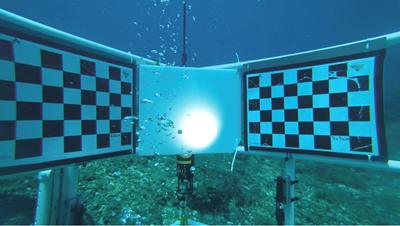Overview
Staff
Related Projects
Background:
Variations in pressure and temperature within the Earth drive chemical reactions that release fluids, or cause the migration of fluids. Deep in the Earth, melt forms in the mantle due to heating, decompression or the addition of volatiles. At shallower depths, aqueous fluid movement can cause earthquakes and the propagation of fractures, trigger volcanic activity, lead to fluid accumulations in reservoirs and result in the formation of hydrothermal mineral deposits. At even shallower depths, gases may be released by metamorphic reactions such as serpentinization, by degradation of organic matter, or by hydrate dissociation, or may be injected to mitigate greenhouse gas production. In all of these environments, it is important to understand how fluid pathways form and are utilised. Within the group, we use seismic and electromagnetic techniques to explore fluids at all depths in the sub-surface, as well as geological fieldwork to investigate fluid flow pathways and volcanic features. We conduct monitoring, detection and modelling of transport through the sub-surface of all of these fluids, important for determining chemical budgets in the Earth System, as well as ensuring that our environment is protected from man-made change.

Key Questions:
- How can we measure fluid flux in the sub-surface and into the oceans, including magma, aqueous fluids, methane and carbon dioxide?
- What are the driving forces for and pathways of fluid flow?
- How does fluid pressure drive tectonic activity?
- How do fluids influence geodynamic processes?
How do we do it?
In the Geology and Geophysics group we collect our own datasets using novel marine geophysical equipment including ocean bottom seismometers, controlled source electromagnetics, a range of seismic sources (chirp, boomer, sparker, airguns), multichannel streamers, a 3D Chirp system, multibeam bathymetry and high-frequency sonars.

Using these techniques, we can detect changes in seismic or electrical properties due to the presence of fluids. We can generate images of melt, aqueous fluid and gas reservoirs in the subsurface and escaping into the ocean. We can also track active fluid motion from the resulting seismicity, from deep subduction zone earthquakes to the sound of bubbles emerging into the ocean.
We use numerical modelling to understand the processes driving the observations that we have made. We work with the Geochemistry group to determine the interaction of physical and chemical processes.
Links to other Research Themes
Volcanic and magmatic processes
Critical Elements and Metal Deposits
Carbon Dioxide Removal and Storage
| Staff Member | Primary Position |
|---|---|
| Prof. Jon Bull | Associate Dean Research |
| Dr Tom Gernon | Associate Professor in Earth Science |
| Dr Derek Keir | Associate Professor in Geophysics |
| Dr Nicholas Harmon | Associate Professor in Geophysics |
| Prof. Tim Henstock | Professor of Geophysics |
| Prof. Lisa McNeill | Professor of Tectonics |
| Prof. Tim Minshull | Professor |
| Dr Catherine Rychert | Associate Professor in Geophysics |
| Dr Adam Robinson | Research Fellow in Seismology |
| Mr Ben Roche | Postgraduate research student |
| Dr Ben Callow | Postgraduate researcher |
| Dr Romina Gehrmann | Research Fellow |
| Naima Yilo | Postgraduate research student |
| Farid Jedari-Eyvazi | QI Geophysicist |
| Michael Dale | Postgraduate research student |
| Emma Horn | Postgraduate research student |
| Dr Jianghui Li | Research Fellow |
| Rhiannon Rees | Postgraduate research student |
| Duncan Stevens | Postgraduate research student |
| Emma Watts | Postgraduate research student |